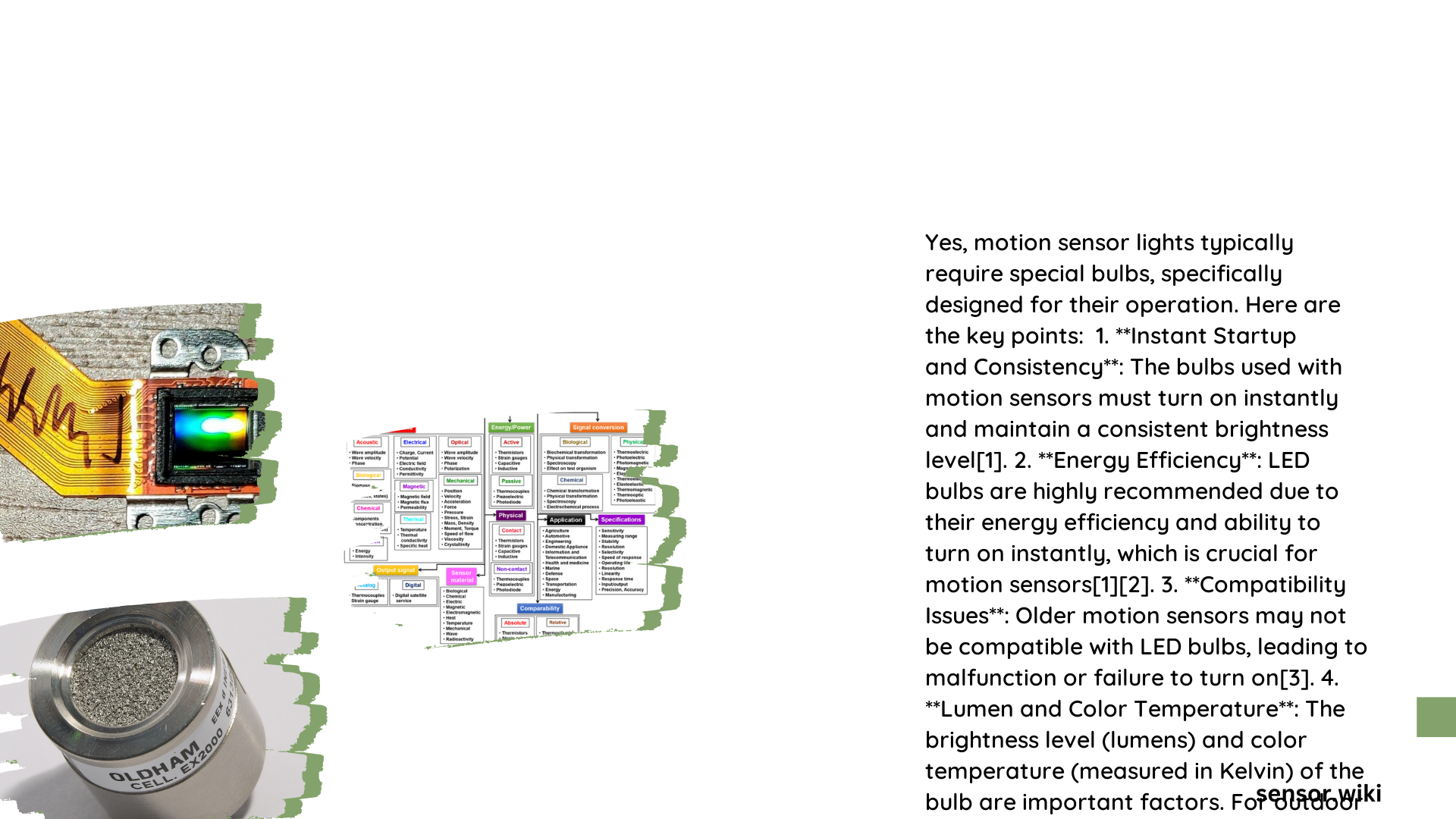Motion sensor lights represent an innovative lighting solution that combines convenience, security, and energy efficiency. Homeowners and professionals often wonder about the specific bulb requirements for these intelligent lighting systems. Understanding the nuanced compatibility, technical specifications, and performance characteristics is crucial for selecting the right bulbs that seamlessly integrate with motion sensor technology and deliver optimal illumination.
What Are Motion Sensor Light Bulb Requirements?
Motion sensor lights do indeed require specific bulb characteristics to function effectively. Unlike traditional lighting, these systems demand bulbs with precise technical specifications and compatibility features.
Can Standard Bulbs Work with Motion Sensors?
Standard bulbs can technically be used with motion sensors, but they may not provide optimal performance. Specialized motion sensor bulbs offer several advantages:
- Instant Activation: Designed for rapid response to motion detection
- Energy Efficiency: Lower power consumption
- Durability: Enhanced lifespan under frequent switching conditions
What Technical Specifications Matter?
| Specification | Importance | Recommended Range |
|---|---|---|
| Base Type | Critical | E26/Medium Base |
| Wattage | High | 8-14 Watts |
| Lumens | Essential | 800-1600 Lumens |
| Color Temperature | Moderate | 2700K-5000K |
How Do LED Bulbs Enhance Motion Sensor Performance?
LED bulbs represent the gold standard for motion sensor lighting due to multiple technical advantages:
- Rapid Switching: LEDs activate and deactivate instantaneously
- Low Energy Consumption: Significantly reduced power requirements
- Extended Lifespan: Up to 15,000 hours of operational time
- Temperature Resilience: Perform consistently across various environmental conditions
What Certifications Should You Consider?
When selecting motion sensor bulbs, prioritize products with:
- UL (Underwriters Laboratories) certification
- CE (Conformité Européene) compliance
- Energy Star ratings
- Manufacturer-specific motion detection technology
Are Smart Motion Sensor Bulbs Worth Investing?
Smart motion sensor bulbs offer advanced features beyond traditional options:
- App Control: Remote management and customization
- Integration: Compatible with smart home ecosystems
- Advanced Sensing: Sophisticated motion detection algorithms
- Programmable Settings: Customizable activation parameters
What Potential Issues Might Arise with Incompatible Bulbs?
Potential challenges include:
- Delayed motion detection response
- Inconsistent illumination
- Premature bulb failure
- Reduced energy efficiency
- Potential electrical system compatibility problems
Cost-Benefit Analysis of Motion Sensor Bulbs
Initial Investment vs. Long-Term Savings:
– Higher upfront cost: $10-$25 per bulb
– Energy savings: Up to 75% compared to traditional bulbs
– Reduced replacement frequency
– Enhanced home security
Practical Recommendations

- Choose LED-based motion sensor bulbs
- Verify base type compatibility
- Check lumens and color temperature
- Consider smart home integration potential
- Prioritize certified products
Conclusion
Motion sensor lights typically require specialized bulbs optimized for rapid switching, energy efficiency, and precise motion detection. While standard bulbs can function, dedicated motion sensor bulbs provide superior performance and reliability.
